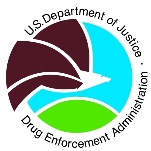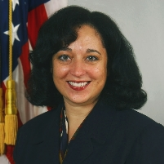Wall of Honor for Drug Enforcement Agents Who Have Died in Action
- Basic Agent Training
- Practical Applications
- Tactical Training
- Firearms Training
- Intelligence Training
- Diversion Investigator Training
- Forensic Chemist Training
- Computer Training
- Executive Development Program
- Professional Development Program
- Clandestine Laboratory Training
- State and Local Training
- Legal Training
- Ethics Training
|
Computer Sciences Corporation
|
$155,168,683
|
|
L-3 Communications Holdings, Inc.
|
$153,051,192
|
|
Margon Inc
|
$106,818,000
|
|
Nortel Networks Corporation
|
$97,954,119
|
|
Motorola, Inc
|
$81,928,879
|
|
Arctic Slope Regional Corporation
|
$80,708,860
|
|
Sra International, Inc.
|
$65,745,007
|
|
Ruchman and Associates, Inc.
|
$45,391,771
|
|
Gwa - Datatrac Fast LLC
|
$41,791,339
|
|
G4S PLC
|
$41,790,471
|
FY 2009 Performance Budget: Congressional Budget Submission
(PDF)
(by Brian Braiker, Newsweek)
DEA: California Medical Marijuana Information
During Tandy’s tenure as head of DEA, she expanded the agency’s foreign presence, entering the first intelligence sharing agreements with China and Russia. Tandy also deployed the first teams of DEA agents to conduct counter-narcotics operations in Afghanistan. In 2005, Tandy authorized the launch of DEA’s first website designed for teens regarding the consequences of illegal drugs,
. Tandy resigned as DEA administrator in October 2007 and took a job as senior vice president of Motorola.
- Table of Contents
- Overview
- History
- What it Does
- Where Does the Money Go
- Controversies
- Suggested Reforms
- Comments
- Leave a comment


On May 13, 2015, Chuck Rosenberg, a longtime federal prosecutor, was named by Attorney General Loretta Lynch as acting chief of the Drug Enforcement Administration, taking over from Michele Leonhart, who was pushed out because of a sex scandal within the agency.
Rosenberg was born in Brooklyn and grew up in Long Island’s Nassau County. He attended Tufts University, graduating in 1982 with a B.A., and Harvard, earning a Master’s in public policy. He initially went to work in Washington for then-Rep. Matt McHugh (D-New York), but left there after two years to attend law school. He earned his J.D. from the University of Virginia in 1990.
He joined the Justice Department right out of law school as part of the Attorney General’s Honors Program, which has been the starting point for many high Justice officials. Rosenberg began as a prosecutor in the tax division and in 1994 was an assistant U.S. attorney for the Eastern District of Virginia. In 2000, he left federal service to work for the law firm of Hunton and Williams. He also served occasionally as a legal analyst for NBC News.
Rosenberg was called back to the government in 2002 to serve as counsel to Federal Bureau of Investigation (FBI) Director Robert Mueller. His job was initially in doubt because it was found by Bush administration officials that Rosenberg had made a donation to the congressional campaign of Chris Van Hollen, a Maryland Democrat and Harvard classmate of Rosenberg’s. Administration officials were convinced that the donation came more from friendship than partisanship and Rosenberg was allowed to take his post. The following year, he was made counselor to Attorney General John Ashcroft and in 2004 he became chief of staff to then-Deputy Attorney General James Comey.
In 2005, Rosenberg was made the interim U.S. Attorney in the Southern District of Texas, where he focused on immigration and drug prosecutions. The next year, he was confirmed as U.S. attorney for the Eastern District of Virginia. He supervised the prosecution of many high-profile cases there, including that of 9/11 plotter Zacarias Moussaoui; the dog-fighting case against NFL quarterback Michael Vick; the corruption case against Rep. William Jefferson, the Democratic Louisiana congressman who was found to have kept bribe money in his home freezer; software piracy cases and incidents of fraud among contractors in Afghanistan.
Beginning in 2007, he served as chief of staff to Attorney General Alberto Gonzales. Rosenberg left again for the private sector in 2008, defending white-collar criminals as a partner at Hogan Lovells.
Rosenberg returned in 2013 to work for James Comey again, this time as chief of staff and counselor to the FBI director.
Unlike his predecessor, as leader of the DEA, Rosenberg is expected to focus more on heroin and harder drugs and less on enforcement of marijuana laws. He is also expected to be in charge of the DEA for the remainder of President Obama’s term.
Rosenberg and his wife, Mary, have two children. He loves baseball and has often served as his son’s Little League coach.
-Steve Straehley
To Learn More:

The Administrator of the Drug Enforcement Administration (DEA), Michele Leonhart graduated from Bemidji State College in Minnesota with a bachelor’s degree in criminal justice in 1978. She began her law enforcement career by attending the Baltimore Police Academy, after which Leonhart served as a patrol officer in the Northwest District of Baltimore.
- Latest News
- D.C. Public Schools will Teach all Second-Graders to Ride a Bike
- New Rule in Germany Limits Sales of Sex-Themed E-Books to 10pm to 6am
- What Happened to the 6-Year-Old Tibetan Boy the Chinese Government Kidnapped 20 Years Ago?
- U.S. Ambassador to Turkey Photoshops his Hair Color to Mock Turkish Mayor
- Mystery Artist Calls Attention to Unfixed Potholes by Drawing Penises around Them
Wall of Honor for Drug Enforcement Agents Who Have Died in Action
- Basic Agent Training
- Practical Applications
- Tactical Training
- Firearms Training
- Intelligence Training
- Diversion Investigator Training
- Forensic Chemist Training
- Computer Training
- Executive Development Program
- Professional Development Program
- Clandestine Laboratory Training
- State and Local Training
- Legal Training
- Ethics Training
|
Computer Sciences Corporation
|
$155,168,683
|
|
L-3 Communications Holdings, Inc.
|
$153,051,192
|
|
Margon Inc
|
$106,818,000
|
|
Nortel Networks Corporation
|
$97,954,119
|
|
Motorola, Inc
|
$81,928,879
|
|
Arctic Slope Regional Corporation
|
$80,708,860
|
|
Sra International, Inc.
|
$65,745,007
|
|
Ruchman and Associates, Inc.
|
$45,391,771
|
|
Gwa - Datatrac Fast LLC
|
$41,791,339
|
|
G4S PLC
|
$41,790,471
|
FY 2009 Performance Budget: Congressional Budget Submission
(PDF)
(by Brian Braiker, Newsweek)
DEA: California Medical Marijuana Information
During Tandy’s tenure as head of DEA, she expanded the agency’s foreign presence, entering the first intelligence sharing agreements with China and Russia. Tandy also deployed the first teams of DEA agents to conduct counter-narcotics operations in Afghanistan. In 2005, Tandy authorized the launch of DEA’s first website designed for teens regarding the consequences of illegal drugs,
. Tandy resigned as DEA administrator in October 2007 and took a job as senior vice president of Motorola.
Comments
moreless

On May 13, 2015, Chuck Rosenberg, a longtime federal prosecutor, was named by Attorney General Loretta Lynch as acting chief of the Drug Enforcement Administration, taking over from Michele Leonhart, who was pushed out because of a sex scandal within the agency.
Rosenberg was born in Brooklyn and grew up in Long Island’s Nassau County. He attended Tufts University, graduating in 1982 with a B.A., and Harvard, earning a Master’s in public policy. He initially went to work in Washington for then-Rep. Matt McHugh (D-New York), but left there after two years to attend law school. He earned his J.D. from the University of Virginia in 1990.
He joined the Justice Department right out of law school as part of the Attorney General’s Honors Program, which has been the starting point for many high Justice officials. Rosenberg began as a prosecutor in the tax division and in 1994 was an assistant U.S. attorney for the Eastern District of Virginia. In 2000, he left federal service to work for the law firm of Hunton and Williams. He also served occasionally as a legal analyst for NBC News.
Rosenberg was called back to the government in 2002 to serve as counsel to Federal Bureau of Investigation (FBI) Director Robert Mueller. His job was initially in doubt because it was found by Bush administration officials that Rosenberg had made a donation to the congressional campaign of Chris Van Hollen, a Maryland Democrat and Harvard classmate of Rosenberg’s. Administration officials were convinced that the donation came more from friendship than partisanship and Rosenberg was allowed to take his post. The following year, he was made counselor to Attorney General John Ashcroft and in 2004 he became chief of staff to then-Deputy Attorney General James Comey.
In 2005, Rosenberg was made the interim U.S. Attorney in the Southern District of Texas, where he focused on immigration and drug prosecutions. The next year, he was confirmed as U.S. attorney for the Eastern District of Virginia. He supervised the prosecution of many high-profile cases there, including that of 9/11 plotter Zacarias Moussaoui; the dog-fighting case against NFL quarterback Michael Vick; the corruption case against Rep. William Jefferson, the Democratic Louisiana congressman who was found to have kept bribe money in his home freezer; software piracy cases and incidents of fraud among contractors in Afghanistan.
Beginning in 2007, he served as chief of staff to Attorney General Alberto Gonzales. Rosenberg left again for the private sector in 2008, defending white-collar criminals as a partner at Hogan Lovells.
Rosenberg returned in 2013 to work for James Comey again, this time as chief of staff and counselor to the FBI director.
Unlike his predecessor, as leader of the DEA, Rosenberg is expected to focus more on heroin and harder drugs and less on enforcement of marijuana laws. He is also expected to be in charge of the DEA for the remainder of President Obama’s term.
Rosenberg and his wife, Mary, have two children. He loves baseball and has often served as his son’s Little League coach.
-Steve Straehley
To Learn More:

The Administrator of the Drug Enforcement Administration (DEA), Michele Leonhart graduated from Bemidji State College in Minnesota with a bachelor’s degree in criminal justice in 1978. She began her law enforcement career by attending the Baltimore Police Academy, after which Leonhart served as a patrol officer in the Northwest District of Baltimore.
- Latest News
- D.C. Public Schools will Teach all Second-Graders to Ride a Bike
- New Rule in Germany Limits Sales of Sex-Themed E-Books to 10pm to 6am
- What Happened to the 6-Year-Old Tibetan Boy the Chinese Government Kidnapped 20 Years Ago?
- U.S. Ambassador to Turkey Photoshops his Hair Color to Mock Turkish Mayor
- Mystery Artist Calls Attention to Unfixed Potholes by Drawing Penises around Them




Comments
moreless